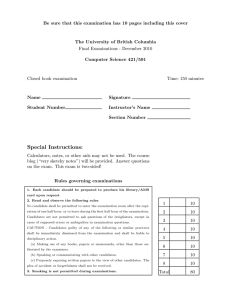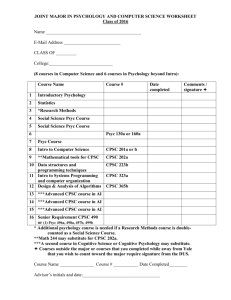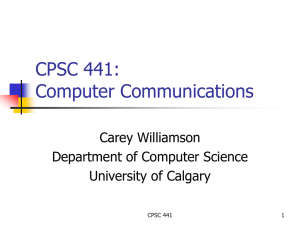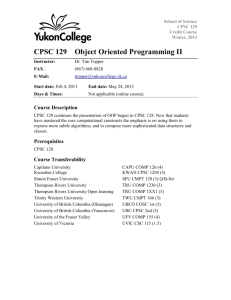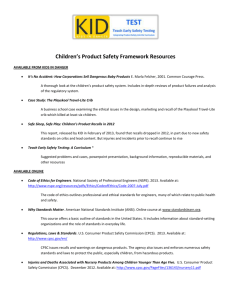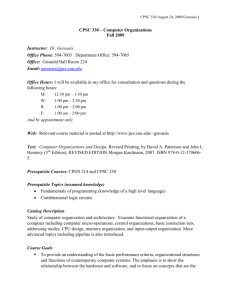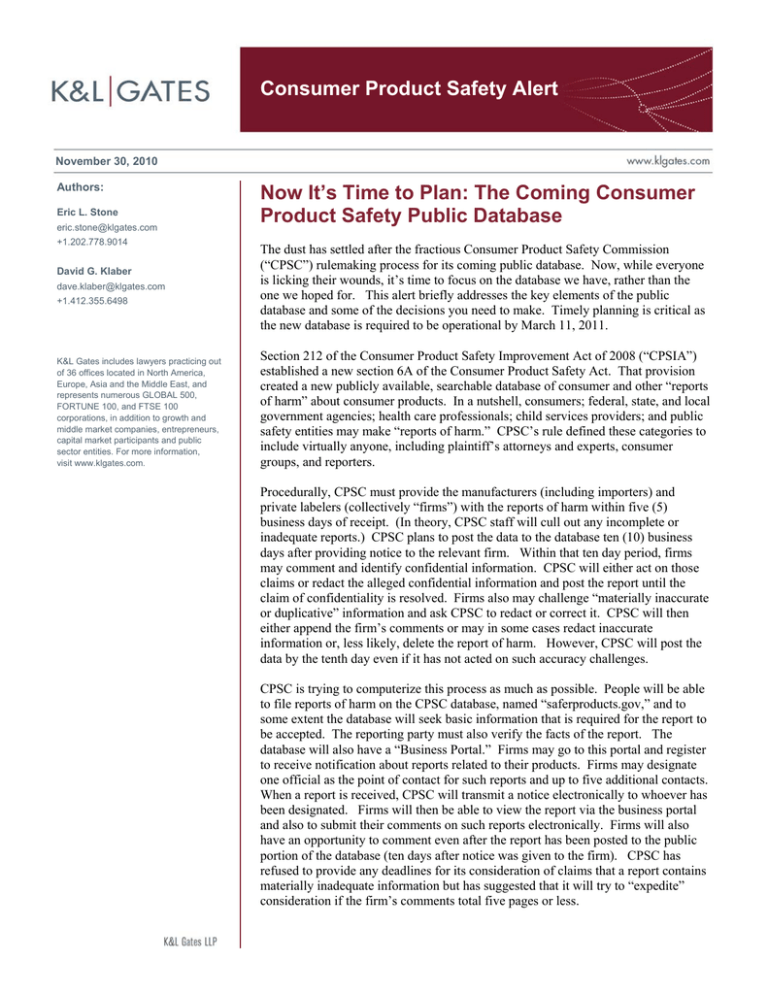
Consumer Product Safety Alert
November 30, 2010
Authors:
Eric L. Stone
eric.stone@klgates.com
+1.202.778.9014
David G. Klaber
dave.klaber@klgates.com
+1.412.355.6498
K&L Gates includes lawyers practicing out
of 36 offices located in North America,
Europe, Asia and the Middle East, and
represents numerous GLOBAL 500,
FORTUNE 100, and FTSE 100
corporations, in addition to growth and
middle market companies, entrepreneurs,
capital market participants and public
sector entities. For more information,
visit www.klgates.com.
Now It’s Time to Plan: The Coming Consumer
Product Safety Public Database
The dust has settled after the fractious Consumer Product Safety Commission
(“CPSC”) rulemaking process for its coming public database. Now, while everyone
is licking their wounds, it’s time to focus on the database we have, rather than the
one we hoped for. This alert briefly addresses the key elements of the public
database and some of the decisions you need to make. Timely planning is critical as
the new database is required to be operational by March 11, 2011.
Section 212 of the Consumer Product Safety Improvement Act of 2008 (“CPSIA”)
established a new section 6A of the Consumer Product Safety Act. That provision
created a new publicly available, searchable database of consumer and other “reports
of harm” about consumer products. In a nutshell, consumers; federal, state, and local
government agencies; health care professionals; child services providers; and public
safety entities may make “reports of harm.” CPSC’s rule defined these categories to
include virtually anyone, including plaintiff’s attorneys and experts, consumer
groups, and reporters.
Procedurally, CPSC must provide the manufacturers (including importers) and
private labelers (collectively “firms”) with the reports of harm within five (5)
business days of receipt. (In theory, CPSC staff will cull out any incomplete or
inadequate reports.) CPSC plans to post the data to the database ten (10) business
days after providing notice to the relevant firm. Within that ten day period, firms
may comment and identify confidential information. CPSC will either act on those
claims or redact the alleged confidential information and post the report until the
claim of confidentiality is resolved. Firms also may challenge “materially inaccurate
or duplicative” information and ask CPSC to redact or correct it. CPSC will then
either append the firm’s comments or may in some cases redact inaccurate
information or, less likely, delete the report of harm. However, CPSC will post the
data by the tenth day even if it has not acted on such accuracy challenges.
CPSC is trying to computerize this process as much as possible. People will be able
to file reports of harm on the CPSC database, named “saferproducts.gov,” and to
some extent the database will seek basic information that is required for the report to
be accepted. The reporting party must also verify the facts of the report. The
database will also have a “Business Portal.” Firms may go to this portal and register
to receive notification about reports related to their products. Firms may designate
one official as the point of contact for such reports and up to five additional contacts.
When a report is received, CPSC will transmit a notice electronically to whoever has
been designated. Firms will then be able to view the report via the business portal
and also to submit their comments on such reports electronically. Firms will also
have an opportunity to comment even after the report has been posted to the public
portion of the database (ten days after notice was given to the firm). CPSC has
refused to provide any deadlines for its consideration of claims that a report contains
materially inadequate information but has suggested that it will try to “expedite”
consideration if the firm’s comments total five pages or less.
Consumer Product Safety Alert
Generally, CPSC will attempt to find and notify any
firm that has not registered on the business portal. It
is conceivable that firms notified in this fashion will
have less time to respond given that CPSC intends to
post the report within ten days of when it “transmits”
the report of harm.
Once reports of harm are posted on the database,
they may be searched based on the manufacturer or
private labeler name, name of product, the model
name, date submitted, and other elements CPSC
determines. Searchers can request the information
in the form of a data “report.” CPSC will provide a
disclaimer on the database and any report printed out
from the database that says that CPSC does not
guarantee the accuracy, completeness, or adequacy
of the database contents.
Firms have several things to consider. Do they want
to respond to reports of harm that are inaccurate or
may contain confidential commercial information?
Answering this question will involve a careful
weighing of the potential for posting of inaccurate
information and the harm expected from such
postings versus the costs of investigating reports and
responding. Although advocates for the database
focus on the potential benefits to consumers of such
reports, many in the industry are concerned about
data being “planted” and about the concern that
inaccurate reports might be aggregated as
“government data” for later use by advocates or
competitors against a firm or product. In devising
their approach to the database, manufacturers and
private labelers will need to consider the potential
for misuse and harm, whether in litigation,
regulatory proceedings, actions initiated by state
attorneys general, or via adverse publicity.
Who will be responsible for such efforts? Does the
firm’s current system support such an effort?
Obviously, the initial time frame for comment will
be short and it is uncertain how fast CPSC will deal
with comments filed after the report is posted.
(Some fear that limited CPSC resources will lead to
a “post it and forget it” approach.) Each firm may
be starting out from a different base and may have
to discuss the pros and cons of changing or updating
existing procedures and whether they want to make
it a practice to respond before the reports are posted
whenever possible. Given that the content of any
challenges along with their length will affect the
likelihood that the staff will address the comment in
a timely manner, firms need to decide whether they
have the expertise to handle such responses.
Firms also need to decide whether they wish to
register an electronic point of contact. This process
will allow faster access to reports and may give
firms that are equipped to do so more opportunities
to “beat” the ten day deadline before posting.
However, considerations of resources and the
impact of obtaining information must be considered
in a context broader than whether to comment on
the database since there are CPSC reporting
obligations and product liability considerations that
may apply.
Conclusion
The new CPSC database will present a number of
challenges and difficult decisions for manufacturers
and private labelers of consumer products. We are
happy to work with any firms who wish to explore
their options and develop appropriate systems.
November 30, 2010
2
Consumer Product Safety Alert
Anchorage Austin Beijing Berlin Boston Charlotte Chicago Dallas Dubai Fort Worth Frankfurt Harrisburg Hong Kong London
Los Angeles Miami Moscow Newark New York Orange County Palo Alto Paris Pittsburgh Portland Raleigh Research Triangle Park
San Diego San Francisco Seattle Shanghai Singapore Spokane/Coeur d’Alene Taipei Tokyo Warsaw
Washington, D.C.
K&L Gates includes lawyers practicing out of 36 offices located in North America, Europe, Asia and the Middle East, and represents numerous
GLOBAL 500, FORTUNE 100, and FTSE 100 corporations, in addition to growth and middle market companies, entrepreneurs, capital market
participants and public sector entities. For more information, visit www.klgates.com.
K&L Gates comprises multiple affiliated entities: a limited liability partnership with the full name K&L Gates LLP qualified in Delaware and
maintaining offices throughout the United States, in Berlin and Frankfurt, Germany, in Beijing (K&L Gates LLP Beijing Representative Office), in
Dubai, U.A.E., in Shanghai (K&L Gates LLP Shanghai Representative Office), in Tokyo, and in Singapore; a limited liability partnership (also named
K&L Gates LLP) incorporated in England and maintaining offices in London and Paris; a Taiwan general partnership (K&L Gates) maintaining an
office in Taipei; a Hong Kong general partnership (K&L Gates, Solicitors) maintaining an office in Hong Kong; a Polish limited partnership (K&L
Gates Jamka sp.k.) maintaining an office in Warsaw; and a Delaware limited liability company (K&L Gates Holdings, LLC) maintaining an office in
Moscow. K&L Gates maintains appropriate registrations in the jurisdictions in which its offices are located. A list of the partners or members in each
entity is available for inspection at any K&L Gates office.
This publication is for informational purposes and does not contain or convey legal advice. The information herein should not be used or relied upon
in regard to any particular facts or circumstances without first consulting a lawyer.
©2010 K&L Gates LLP. All Rights Reserved.
November 30, 2010
3


